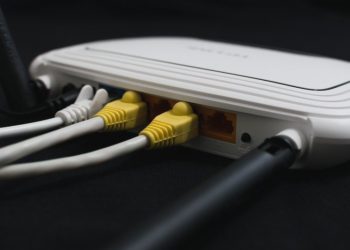Over the years, wireless internet connections have shown advancements making them extremely common. Accessibility is easy, almost from any part of the world. The universe has now become a small community due to the availability of the internet, which has enhanced globalization. It has also revolutionized people’s lifestyles.
There are many high-speed internet providers in various parts of the world with different rates and specification plans for their services. However, for one reason or the other, you might not be able to acquire these services directly from the service providers. The good news though is that you might have a generous neighbor who is willing to share their WiFi internet signal with you. However, at times, the signal strength might be weak.
The good news is that you might have a weak signal but to improve wireless signals, you can optimize a few things such as firmware and drivers. Below is a guide of some of the things you can do in order to get better WiFi signal from your neighbor.
Let’s get right into it, shall we?
Steps to Improve WiFi Signal from Your Neighbor
In modern day, a weak Wi-Fi signal is a nightmare in the verge to test your patience, from poor loading speed to no connection at all. Weak Wi-Fi signals pause as a challenge when you are up for a task either browsing the internet or playing video games. The challenge might be disturbing, but there are ways of improving wireless signals, at home and at your office. Upgrading your wireless signals will help you improve your existing connections too. These methods mentioned below, are very easy and understandable.
1. Secure Wired Connection
Checking your wired connection is an important aspect to consider. Before taking any major steps in improving your Wi-Fi signal, ensure the flow of internet goes as it should. Have an Ethernet cable then plug your computer into your modem. To monitor the internet speed, you will have to run a speed test.
In such instances, the speed test will have to match the speed on your internet bill, but if it does not, then it is the right time to reach out to your ISP, or replace your modem.
If the modem is ok, try doing a wireless run as you stand next to your router. If the speeds seem ok next to the router but not anywhere else around the house, there might be a problem with your Wi-Fi coverage. When your internet runs slow when near a router, then it is time to upgrade your hardware.
2. Invest in A Wireless Repeater
Sometimes, the best hack requires some money; however, it is worth a shot. Buying a wireless repeater is totally worth it for it helps in boosting of signals. This makes it easier for you to enjoy the rest of your time browsing or gaming, without interruption. The repeater boosts the signals when they drop, hence increasing speed even when you are a distance away from the router, giving you significant improvement in your connectivity. This plays a vital role in boosting your WiFi signal which you receive from the neighbor. Such methods are very effective only when you have your neighbor’s password or when their network is open.
3. Get A Modern Router
When your wired connections are weak, you have to consider a router upgrade. Before doing anything else, it is vital to try and upgrade or update your router. With the fast-growing modern technology, manufacturers are also advancing software to boost internet speed. Upgrading your firmware might depend on your device’s manufacturer and model. Alternatively, you can get a modern router. Modern routers have the update procedure built in the administration interface. This makes upgrading as easy as hitting the firmware upgrade section.
If you have an older router, it still requires an upgrade, since they don’t have inbuilt update procedure. To do so, you can visit their websites, go to the routers support page and then download a firmware file and upload it to the administration interface.
It might be a draining process but worth the effort. A regular update of your firmware is still important even if your wireless network is in a good condition. This helps in performance improvements, security updates and better features.
4. Find the Best Position for Your Router
Another great way by which you can improve he reception of your neighbors WI-FI is by placing your primary router in the most central place in your house or apartment. Sometimes, the position of your router might be the reason as to why you are receiving weak signal from your neighbor. Wi-Fi signals are not distributed equally in homes.
There are factors that hinder uniform distribution such as distance and barriers. The location of the router can highly affect the wireless coverage. Often, people tend to put their routers by the window or in a cabinet. When you do so, you will realize that the signal strength will be almost the same in the whole house. However, it is also advisable to place the receiver at a different place in your house at apartment before you settle on the best position.
You can try to put your router or receiver as close as possible to your neighbor’s house. The reason for this is that the signal from your neighbor’s house will have a much less distance to cover and as a result might be stronger. When you have a wireless router, it is important you consider an open space. Keep your router far from obstructions and walls. If surrounded by open air, you are likely to receive clear signals.
5. Connectivity Interference from Other Devices
Another aspect to consider is keeping your router away from electronics and heavy appliances. Wi-Fi uses a specific wireless frequency range. Appliances and devices which include cordless phones, microwaves and Bluetooth devices share the same frequency range too.
When your appliances run close to your router, reception of clear signals will be hindered. This causes interference with the signals, making you to experience poor and low internet speeds. Orient your routers antenna vertically to secure coverage. Mounting your router on top of a shelf or high on the wall helps you get the best signals.
6. Consider Long-Range Routers
Imagine various home using the same connectivity for different reasons from internet surfing, video streaming and playing games at the same time. With increased bandwidth and strength, long range routers not only serve a wider area, but also allow multiple devices to share and use the network.
You can technically connect a number of devices. However, to be on the safe side, your operating system is designed to show you the number of wireless connections around you. Your OPS show the channels through which networks are communicating. For example, if your OPS is windows, find the best channel used by the least number of networks. Always connect to the network that operates on a channel with the least number of connections.
7. Type of Network
Wireless networks are designed to function on various standards. The most popular one is the 802.11g, though with lower speeds unlike other modes of connections, due to the low bandwidth. A more developed standard is 802.11n, which is quickly replacing the previous standards.
It is reliable and offers a more coverage range and fast speeds. It is important to consider the type of networks based on 802.11n standards before connecting to any neighboring networks. Ensure that the operating system of your device supports it too.
8. USB Adaptors
Modern devices have network adapters that are built in. However, you can still consider an external adapter for better performance. It will not be visible to notice any change in signal strength but the increase in speed while browsing is noticeable.
9. Check Your Wi-Fi Settings
To get optimal performance, it is essential you change the wireless settings on your device. Open your networks administrator interface and ensure you have it configured for the best performance. Wi-Fi uses 2.4GHz frequency which is common. However, the interference can be tampered with by noise and other forms of hindrance.
Such settings can be changed to 5GHz. This frequency helps you get the best performance as it is used minimally. However, it not only gives you the best speed experience, but also limits the interference from other external networks, since the 5GHz is rarely used.
10. Access Point Mode
Another great way by which you can improve your signal strength from the neighbors is through access point mode. Here, you need to have the physical access to your neighbor’s router. With this method, instead of wireless connection, you will need to have a cat5 cable which will connect your neighbor’s router to your router. As a result, the WI-FI coverage in your house will be stronger since your router is directly connected to that of your neighbor. The advantage of his wired connection is that strong barriers will be of no consequence. You should realize that in the case of wireless connection between routers, any strong barriers say stone or thick brick does adversely affect the strength of the signal. However, this method will only work if your neighbor is willing to have a cable run from their router to your router. Additionally, it might be a tricky affair if you have another neighbor in between who would not want to have cables running along their walls. However, this is one of the best ways through which you can improve the signal strength.
11. Same Channel Interference
Another factor that might be affecting the signal strength of the WiFi you are getting from your neighbor is that your neighbor could be on the same channel with other people thus weakening the signal strength. You should realize that just like with radios, routers are made with several channels. As a result, these channels can mix with other channels from different routers thus weakening the signal strength. Therefore, if you and your neighbor are getting WiFi signal from similar channels, then the signal strength could become weak.
Checking the wireless network channel that you are using is easy and the good news is that you canals o see how many other devices are on the same channel. If that is the case, then you should change the wireless channel which in turn might help increase the signal strength you are receiving from your neighbor.
12. Use Minimum Devices
As much as you are receiving the WiFi signal from your neighbor, now is not the time to connect all your devices to the network and open those heavy sites that use a lot of bandwidth. If you do so, you are sure to experience very low speeds and the signal will also become weakened. When you are streaming HD videos or playing online games, then, this can be a source of your low internet speeds.
Therefore, if you encounter this problem, what you will need to do is reduce the number of devices which are connected to the Wi-Fi. If it is necessary to stream high quality videos, do so with one or at most two devices. It is possible to set the router to allow a certain number of devices to use large bandwidth, by doing so; you will restrict the number of devices which can use a large bandwidth.
This is possible to do especially if your router has the Quality of Service (QoS) capabilities. The Quality of Service ensures that the connectivity and bandwidth issues of the router are resolved. As a result, even if you get the signal from your neighbor, the signal strength will constantly be high.
13. Use a DD-WRT software
Another great way by which you can increase the signal strength you get from your neighbor is by installing a third-party software in your router. Although routers already come preinstalled with software popularly known as firmware, it is possible to install third party software to enhance the capabilities of the router. One of the best third-party firmware is known as DD-WRT.
The DD-WRT improves your Wi-Fi signal strength by allowing you to better adjust the settings of your router and also fine-tuning the frequency channels. It is also possible to use the 3rdparty firmware to unlock your router’s technical capabilities. The unlocking makes your router draw more power which as a result increases its signal strength. Note though that the increase in the power that a router can draw might cause it to overheat. Therefore, find out the limit at which your router can draw power.
14. Antenna router
Another factor that can really affect the strength of your signal is the antenna of the router. Most standard routers come with two antennas. If that is the case, then changing the direction of the antennas might do the trick. Most people think that pointing the antennae upwards is how it should be done. The truth is that changing the position of the antennas might have better results.
In the case of a 2.4 router, point the router perpendicular. What this means is that you should place one of the antennas in a vertical position while you place the other in a horizontal position. You should make an L shape with the antennas – this will help in the signal strength.
If you are using a 5GHz router, then you should place the antennas at a 45 degrees angle or point them out flat. This position will enable your router to receive the signals better.
Additionally, some routers use internal antennas to get a signal. If you want to get better signal strength from your neighbor, then you should consider using an external antenna on your router. An external antenna receives signals better than an internal antenna.
If you bought your router with an antenna and removed it for one reason or the other, it would be a good idea to fit it back. However, if your router never had an antenna, then you can get it from the routers manufacturers since they sell them separately. There are two types of antennas, omni-directional or directional antennas.
Omni-directional antennas do send the signals in all directions while the directional antennas send the signals in a single direction. A majority of internal antennas are omni-directional, therefore, when getting an external antenna, it is advisable to get a directional one as they focus the signal strength on one direction thus it ends to be stronger.
The reason as to why directional antennas are a bit stronger is that the directed signal does not experience as many weak spots in various directions as is the case with omnidirectional antennas.
Final Recap
The internet has become a part of our everyday lives. As such, each person wants to be connected. However, for one reason or another, you might not be able to get an Internet Service Provider or the necessary hardware to connect to the internet. The good news is that your neighbor might be having internet connection or WiFi signal and they are kind enough to share it with you. At times though, the signal strength might be weak.
To this end, we have highlighted some of the best tactics to help you improve the signals at your home and work place. These tactics will give you a significant upgrade in speed and performance.






